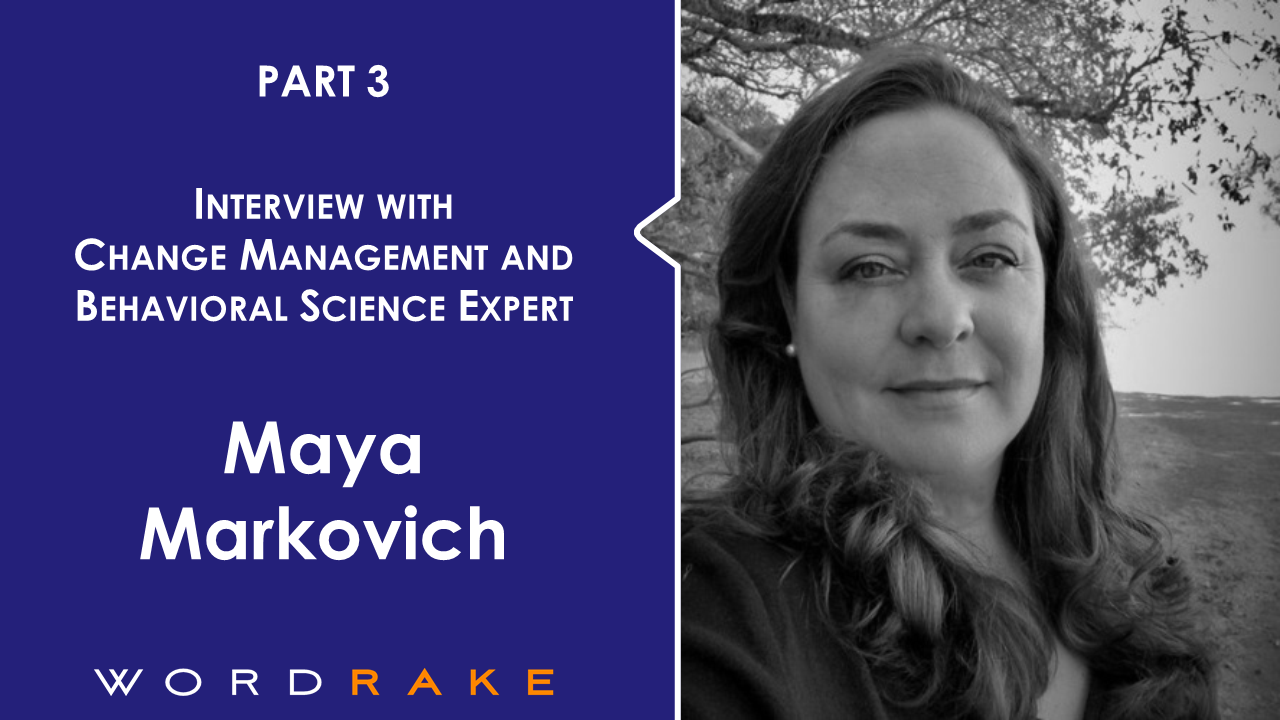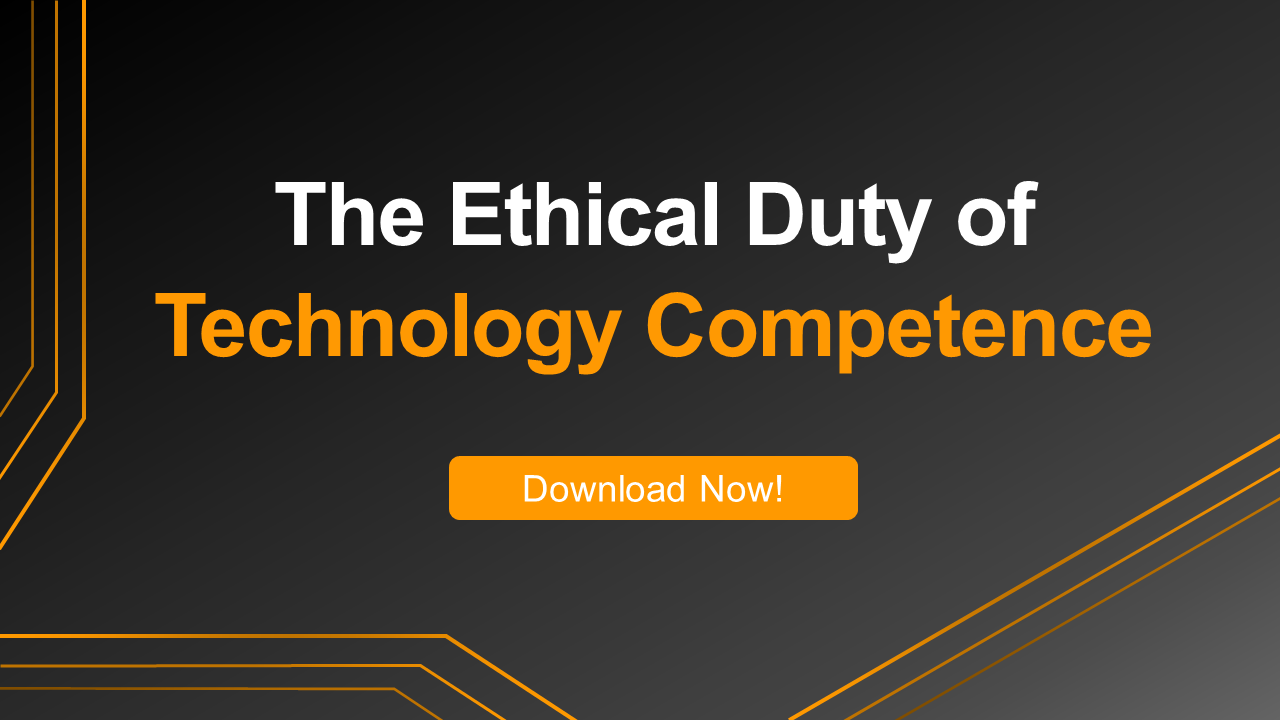Part 3: Creating a Culture of Change in Law Firms
If culture eats strategy for breakfast, then what’s the recipe for a culture that works? In the final part of this three-part series, change management expert Maya Markovich lays out the ingredients for a culture of change. She addresses both sides of the recruiting equation and explains what to look for in the change agents of tomorrow.
What can we learn from behavioral economics that can help improve law firm culture?
A firm can apply the lens of behavioral economics to rethink recruiting and training, create a culture of innovation, and provide frameworks for testing ideas through experimentation.
We all need to get better at making people comfortable with the idea of experimentation, providing the psychological safety to do so, providing recognition for those who make the leap, and leveraging existing frameworks to operationalize new workflows.
Individually, lawyers can apply certain principles to increase emotional intelligence, specifically self-awareness, self-regulation, and empathy. Even though the industry is changing, it is fundamentally based on principles of human relationships, and understanding each other continues to be a crucial component.
Law firms seem to create conformity. Is this good? From a behavioral economics perspective, what drives this?
Many people enter firms as independent thinkers with a real drive for improvement, but after a couple of years, that motivation has often ebbed.
I think this is especially true with newly minted associates who have limited or no exposure to firm operations and seek what’s known as social proof. They enter full of enthusiasm to excel but are looking to others for information or cues for how to behave. This informational influence can lead to normative influence, or conformity, in order to be accepted. If an associate enters a traditionally-run firm and is mentored by those who believe there’s only one way to succeed—the closed-mindset path—inevitably conformity will set in.
Moreover, the grind of a new associate’s day leaves little room for creative or strategic thinking, compounded by long hours, ever-higher billable hour targets, and lack of representation in the higher ranks. Many will ultimately seek the path of least resistance, where the steps are clearly defined by those ahead of them, and leave their dreams of making change behind—or leave the practice of law entirely. Legal organizations need to make a hard pivot to recruiting and retaining lawyers with a growth mindset and an entrepreneurial streak.
Do you think newer lawyers are accepting change faster? If so, why?
What’s interesting to track now is how new legal professionals are adopting and adapting to new technologies and processes. They have grown up with technology, so to them, it is the status quo. My sense is that they are already establishing a new baseline, asking the right questions, and that the wariness of legal tech may age out soon.
What three key things should recruits look for when selecting a law firm?
Hybrid roles (e.g., partly billable with room for exploration) and existing resources in legal project management, operations, and innovation. Also, notice where open “innovation” roles are listed; if they are under IT or Business Development categories, the firm or legal department has likely not thought through the goals and strategy of a robust program and will not be aware of the true dedication required to support meaningful change.
True, non-performative Equity In/Equity Out. Equity In includes measures that typically fall in the category of DE&I programming, such as hiring and retaining diverse candidates, mandated leadership diversity, and as well as diversity in their own technology and services supply chains. Equity Out refers to the impact an organization’s products or services have on the people it serves. Look for an understanding—backed with demonstrable action—that diverse teams consistently outperform the competition and deliver superlative results. Recruits should also be on the lookout for a focus and transparency on uncovering and remedying potential unintended consequences of their services, with a goal of continuous improvement.
Forward-thinking professional development. To thrive in today’s and tomorrow’s legal industry, lawyers need some foundational literacies like a basic understanding of data science, business, design thinking, and project management. They also need to develop competency in creativity, flexibility, collaboration, and emotional intelligence. Lawyers with resilience, creativity, curiosity, comfort with ambiguity, and a bias to action will have the most impact and serve their clients better. Look for firms that acknowledge this need and provide opportunities for their lawyers to grow in these ways.
How are change management and professional development connected? What role does change management play?
True professional development requires a growth mindset (as opposed to a fixed mindset), sometimes referred to as a “beginner’s mindset.” A growth mindset embraces change as fundamental to the development process, and change management can provide the framework to make the most of it.
Change management helps lawyers embrace persistent problem-solving, calculated risk-taking, and viewing challenges as opportunities. A person with a growth mindset expects to learn from every experience, accept mistakes as a part of how they learn, listen to user feedback, bounce back from failure, and be willing to try again.
Applying change management to professional development creates room for the growth mindset to evolve. A growth mindset can create advancement opportunities and improve client service, which yields even more opportunities.
To identify better and more efficient ways to deliver legal services, you must be able to shed preconceived notions about how lawyers have operated for hundreds of years to think clearly about what value lawyers truly bring to their clients now and in the future, how to create new business models for the practice of law, and how to teach these new skills to those entering the profession.
I also believe that a growth mindset will help legal professionals reimagine legal services so that we can provide value to the 80% of the population who need lawyers but are not currently served by them.
What can we learn from behavioral economics that can help improve law firm business?
We must move from the abstract strategy of client relationship-building to understanding what influences client behavior. We must learn to understand their patterns and drivers to meet them where they are. We can apply principles of behavioral economics to drive acquisition, retention, process optimization, pricing strategies, and much more.
What message would you like to leave for the lawyers of tomorrow?
This is a great time to enter the legal industry. New lawyers can leapfrog the drudgery of cookie-cutter legal work that used to define those early associate years—document review, long hours at the printers, keeping track of countless signature pages—and gain earlier substantive experience in higher-value work, strategic thinking, and issues that demand insight and emotional intelligence. These are not only the most professionally satisfying aspects of the profession, but they also cultivate the attributes that make the best lawyers so good. Moreover, lawyers no longer need to stick to a narrow career path—options abound for leveraging legal training in ways unimaginable just a few years ago. The industry is changing in real time, and each of us has a unique opportunity to shape and drive its future.
This is the final installment in a three-part interview. In Part 1, Maya explained the connection between behavioral economics and change management in the law firm context. In Part 2, Maya addressed the structural barriers to change. Be sure to read them all!
About Maya Markovich
Before entering the legal tech industry in 2006, Maya Markovich worked in behavioral science, change management consulting and civil litigation. Since leaving the practice of law, she has honed her skills as a subject matter expert at the intersection of law, VC, and technology.
Maya currently leads the selection, development, launch, and implementation of external early-stage legal tech for Nextlaw Labs. She delivers next-generation technology, process, client, and business growth services across the globe for the Dentons ecosystem, including growth of legal tech startups in the portfolio of investment arm, Nextlaw Ventures. She aims to build future-proof methodologies and tech to advance the legal industry, its clients, and consumers via achievable, sustainable, and scalable design and implementation. Collaborating with legal tech communities and experts worldwide, she continually evolves Nextlaw Labs' partnership and investment strategies. She was named one of five “Influential Women of Legal Tech” by ILTA in 2020, a “Woman Leading Legal Tech” by The Technolawgist in 2019, and a “Woman of Legal Tech" by the ABA LTRC in 2018 for her work in encouraging, designing and implementing the future of the legal profession around the globe.






